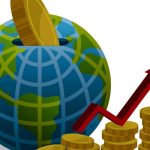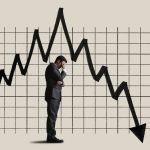A financial crisis is a situation in which many investors attempt to sell assets simultaneously, causing the asset prices to drop significantly. This can be caused by a variety of factors, including panicked investors, a large number of defaults, or destructive speculation. The consequences can be disastrous for the economy, leading to high unemployment, stock market crashes, and banking crises. In this article, we will take a look at some of the most common types of financial crises.
Types of the financial crisis: causes, impacts, and solutions
There are four types of financial crises: sovereign debt crisis, banking crisis, currency crisis, and debt deflation.
Sovereign debt crisis: A situation in which a country is unable to pay its debts to other countries or its citizens. This can happen when a country has too much debt, or when it cannot generate enough revenue to meet its obligations.
Banking crisis: A situation in which banks are unable to meet their obligations to depositors or other creditors. This can happen when there is a run on the banks, or when the value of assets held by the banks drops sharply.
Currency crisis: A situation in which a country’s currency loses value against other currencies. This can happen when a country’s inflation rate is high, or when its trade deficit widens.
Debt deflation: A situation in which the prices of assets drop sharply, leading to a decrease in the value of debt. This can happen when there is a sharp decrease in the demand for credit, or when the supply of money tightens.

Models of economic and financial crises
One of the most influential early studies of financial crises was “Manias, Panics, and Crashes: A History of Financial Crises” by Charles Kindleberger. In this book, Kindleberger documented dozens of financial crises over the past 300 years, and identified several common features.
Kindleberger proposed that there are three phases to every financial crisis: first, “displacement” or “innovation”; second, “euphoria”, in which prices increase rapidly as speculators bid up asset prices; and third, “revulsion”, in which prices crash as investors realize that the underlying asset is not worth what they thought it was.
Many later studies have built on Kindleberger’s work, providing additional evidence and insights. In particular, a number of studies have focused on the role of “herding” behavior in financial crises. Herding occurs when investors make decisions based on the actions of other investors, rather than on objective analysis.
 One well-known model of herding is the “cascading failure” model developed by economists Jose Scheinkman and Wei Xiong. In this model, investors are interconnected, so that the failure of one investor can cause a chain reaction that leads to the failure of another investor.
One well-known model of herding is the “cascading failure” model developed by economists Jose Scheinkman and Wei Xiong. In this model, investors are interconnected, so that the failure of one investor can cause a chain reaction that leads to the failure of another investor.
This kind of herding behavior can magnify the effects of a financial crisis, and can lead to a self-fulfilling prophecy in which investors believe that an asset is worth less than it really is, and so sell it off, causing the price to drop further.
Other studies have focused on the role of “irrational exuberance” in financial crises. This term was first coined by economist Robert Shiller in his book “Irrational Exuberance”, which looked at asset bubbles in the stock market.
Shiller argued that investors can get caught up in a feedback loop in which they believe that an asset is going to keep increasing in value, so they buy it, driving up the price, which then reinforces their beliefs, leading them to buy even more. Eventually, this process becomes unsustainable, and the bubble bursts.
A number of empirical studies have found evidence for this kind of irrational exuberance in a variety of asset markets, including the stock market, the housing market, and the art market.



 One well-known model of herding is the “cascading failure” model developed by economists Jose Scheinkman and Wei Xiong. In this model, investors are interconnected, so that the failure of one investor can cause a chain reaction that leads to the failure of another investor.
One well-known model of herding is the “cascading failure” model developed by economists Jose Scheinkman and Wei Xiong. In this model, investors are interconnected, so that the failure of one investor can cause a chain reaction that leads to the failure of another investor.


 I am an economist and nature lover. By day, I serve as director of economic policy initiatives & institute fellow at the Finance Institute. By night, I muse about economics, finance, nature, and life here at makewallstreetpay.org. I also advise and invest in start-up companies.
I am an economist and nature lover. By day, I serve as director of economic policy initiatives & institute fellow at the Finance Institute. By night, I muse about economics, finance, nature, and life here at makewallstreetpay.org. I also advise and invest in start-up companies.


























